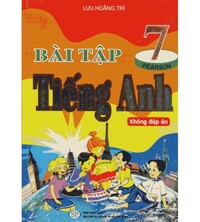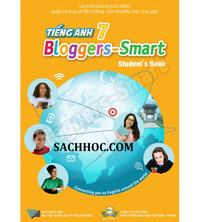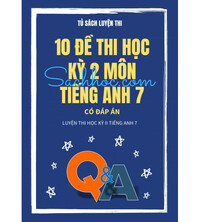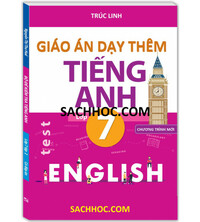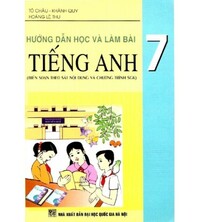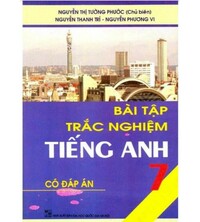Tiếng Anh 7 Review 3 Skills
1. Read the passage. Match the headings in the box with the paragraphs.2. Read the passage again and answer the questions. 3. Work in groups. Interview your group members. Take notes of their answers and report to the class. 4. Listen to Trang talking about watching films with her family. Fill in each blank with ONE word. 5. Write a paragraph of about 70 words about your favourite means of transport. You may use the following questions as cues.
Bài 1
Reading
1. Read the passage. Match the headings in the box with the paragraphs.
(Đọc đoạn văn. Nối các tiêu đề trong hộp với các đoạn văn.)
|
A. Food after the festival B. General information about the festival C. Activities at the festival |
1. _____________
La Tomatina is an unusual festival. It's a fun fight with tomatoes. People hold it in Buñol, Spain on the last Wednesday of every August.
2. _____________
In the town square, there is a high pole with a ham on top of it. People climb the pole and get the ham. At 11 a.m., a jet of water shoots from the water cannons, and people start throwing tomatoes. People throw bags of tomatoes at the crowd. They then throw tomatoes at one another. After one hour, there is another jet of water, and people stop throwing. The whole square now is red with rivers of tomato juice.
3. _____________
After the fight, many people go to restaurants to try paella. It is a traditional Spanish rice dish. It has rice, chicken, seafood, and herbs.
Lời giải chi tiết:
|
1. B |
2. C |
3. A |
1. General information about the festival
(1. Thông tin chung về lễ hội)
La Tomatina is an unusual festival. It's a fun fight with tomatoes. People hold it in Buñol, Spain on the last Wednesday of every August.
(La Tomatina là một lễ hội lạ thường. Đó là một cuộc chiến thú vị với cà chua. Mọi người tổ chức nó ở Buñol, Tây Ban Nha vào thứ Tư cuối cùng của tháng Tám hàng năm.)
Giải thích:The paragraph mentions many information related to the festival such as name, place, and time to celebrate the festival => B. General information about the festival.
(Đoạn văn đề cập đến nhiều thông tin liên quan đến lễ hội như tên, địa điểm, thời gian tổ chức lễ hội=> B. Thông tin chung về lễ hội.)
2. Activities at the festival
(2. Các hoạt động tại lễ hội)
In the town square, there is a high pole with a ham on top of it. People climb the pole and get the ham. At 11 a.m., a jet of water shoots from the water cannons, and people start throwing tomatoes. People throw bags of tomatoes at the crowd. They then throw tomatoes at one another. After one hour, there is another jet of water, and people stop throwing. The whole square now is red with rivers of tomato juice.
(Trong quảng trường của thị trấn, có một cái cột cao với một cái giăm bông trên đầu nó. Mọi người trèo lên cột và lấy cái giăm bông đó. Lúc 11 giờ sáng, một dòng nước bắn ra từ vòi rồng, và mọi người bắt đầu ném cà chua. Mọi người ném những túi cà chua vào đám đông. Sau đó, họ ném cà chua vào nhau. Sau một giờ, có một dòng nước nữa được bắn ra, mọi người ngừng ném. Cả quảng trường bây giờ đỏ rực như dòng sông nước ép cà chua.)
Giải thích: The paragraph mentions some activities at the festival like climbing the pole and getting the ham, throwing tomatoes at the crowd, and one another, …=> C. Activities at the festival
(Đoạn văn đề cập đến một số hoạt động tại lễ hội như leo cột và lấy giăm bông, ném cà chua vào đám đông và vào nhau, …=> C. Các hoạt động tại lễ hội)
3. Food after the festival
(3. Món ăn sau lễ hội)
After the fight, many people go to restaurants to try paella. It is a traditional Spanish rice dish. It has rice, chicken, seafood, and herbs.
(Sau cuộc chiến, nhiều người đến các nhà hàng để ăn thử món paella. Nó là một món cơm truyền thống của Tây Ban Nha. Nó có cơm, gà, hải sản và rau thơm.)
Giải thích: The paragraph mentions a food called paella. People enjoy this food after the fight =>A. Food after the festival
(Đoạn văn đề cập đến một món ăn có tên là “paella”. Mọi người thưởng thức món ăn này sau cuộc chiến=> A. Món ăn sau lễ hội)
Bài 2
2. Read the passage again and answer the questions.
(Đọc lại đoạn văn và trả lời các câu hỏi.)
1. When and where do people hold La Tomatina?
2. What is on the top of the pole?
3. What signals the start and end of the festival?
4. How long is the fight?
5. What is paella?
Lời giải chi tiết:
1. When and where do people hold La Tomatina?
(Mọi người tổ chức lễ hội La Tomatina khi nào và ở đâu?)
- In Buñol, Spain on the last Wednesday of every August.
(Ở Buñol, Tây Ban Nha vào thứ Tư cuối cùng của tháng Tám.)
Giải thích: People hold it in Buñol, Spain on the last Wednesday of every August. (Mọi người tổ chức nó ở Buñol, Tây Ban Nha vào thứ Tư cuối cùng của tháng Tám hàng năm.)
2. What is on the top of the pole?
(Cái gì ở trên đỉnh cột?)
- A ham.
(Giăm bông.)
Giải thích: … there is a high pole with a ham on top of it. (có một cái cột cao với một cái giăm bông trên đầu nó.)
3. What signals the start and end of the festival?
(Điều gì báo hiệu sự bắt đầu và kết thúc của lễ hội?)
- A jet of water shoots from the water cannons.
(Một dòng nước bắn ra từ vòi rồng.)
Giải thích: … At 11 a.m., a jet of water shoots from the water cannons… / After one hour, there is another jet of water, and people stop throwing … (Lúc 11 giờ sáng, một dòng nước bắn ra từ vòi rồng … / Sau một giờ, có một dòng nước nữa được bắn ra, mọi người ngừng ném.)
4.How long is the fight?
(Cuộc chiến kéo dài bao lâu?)
- One hour.
(Một giờ.)
Giải thích: After one hour, … and people stop throwing. (Sau một giờ, … và mọi người ngừng ném.)
5. What is paella?
(Paella là gì?)
- It is a traditional Spanish rice dish. It has rice, chicken, seafood, and herbs.
(Là một món cơm truyền thống của Tây Ban Nha. Nó có cơm, gà, hải sản và rau thơm.)
Giải thích: … many people go to restaurants to try paella. It is a traditional Spanish rice dish. It has rice, chicken, seafood, and herbs. (… nhiều người đến các nhà hàng để ăn thử món paella. Nó là một món cơm truyền thống của Tây Ban Nha. Nó có cơm, gà, hải sản và rau thơm.)
Bài 3
Speaking
3. Work in groups. Interview your group members. Take notes of their answers and report to the class.
(Làm việc nhóm. Phỏng vấn các thành viên trong nhóm của bạn. Ghi lại câu trả lời của họ và báo cáo trước lớp.)
1. How far is it from your house to your school?
2. How do you go to school?
3. What is good about walking?
4. What is good about public transport?
Lời giải chi tiết:
1. A: How far is it from your house to your school?
(Từ nhà đến trường của bạn bao xa?)
B: It is about 2 km from my house to my school.
(Từ nhà mình đến trường khoảng 2 km.)
2. A: How do you go to school?
(Bạn đến trường bằng phương tiện gì?)
B: I go to school by bike.
(Mình đến trường bằng xe đạp.)
3. A: What is good about walking?
(Đi bộ có lợi ích gì?)
B: Walking can help us improve our health and stay in shape.
(Đi bộ có thể giúp chúng ta cải thiện sức khỏe và giữ dáng.)
4. A: What is good about public transport?
(Giao thông công cộng có lợi ích gì?)
B: Public transport is environmentally friendly and reduces air pollution.
(Giao thông công cộng thân thiện với môi trường và giảm ô nhiễm không khí.)
Bài 4
Listening
4. Listen to Trang talking about watching films with her family. Fill in each blank with ONE word.
(Nghe Trang kể chuyện xem phim cùng gia đình. Điền vào mỗi chỗ trống với MỘT từ.)
1. Trang's family mostly watches films at _______.
2. Watching films together improves their _______.
3. They can spend quality _______ together.
4. After watching a film, they talk about its _______ and what they like about the film.
5. Watching films in English is good for her _______ skills.
Câu 5
Writing
5. Write a paragraph of about 70 words about your favourite means of transport. You may use the following questions as cues.
(Viết đoạn văn khoảng 70 từ kể về phương tiện giao thông mà bạn yêu thích. Bạn có thể sử dụng các câu hỏi sau đây như một gợi ý.)
1. What is your favourite means of transport? (Phương tiện giao thông yêu thích của bạn là gì?)
2. Why is it your favourite means of transport? (Tại sao nó là phương tiện giao thông yêu thích của bạn?)
My favourite means of transport is ____________________________________________________________________________________________________________________________________________________________________________________________________
Lời giải chi tiết:
My favourite means of transport is bus. I take a bus to go to school on a daily basis. Buses are environmentally friendly and they help reduce the number of private vehicles. As a result, we can join hands to mitigate the seriousness of air pollution and traffic jams caused by too many vehicles on roads. What's more, travelling by bus is cheap and convenient. I do believe that people should use buses more often.
(Phương tiện giao thông yêu thích của mình là xe buýt. Mình bắt xe buýt để đi học hàng ngày. Xe buýt thân thiện với môi trường và chúng giúp giảm lượng phương tiện cá nhân. Nhờ đó, chúng ta có thể chung tay giảm thiểu mức độ nghiêm trọng của ô nhiễm không khí và ùn tắc giao thông do quá nhiều phương tiện lưu thông trên đường. Hơn nữa, đi lại bằng xe buýt lại còn rẻ và tiện lợi. Mình tin rằng mọi người nên dùng xe buýt nhiều hơn.)
Search google: "từ khóa + timdapan.com" Ví dụ: "Tiếng Anh 7 Review 3 Skills timdapan.com"
